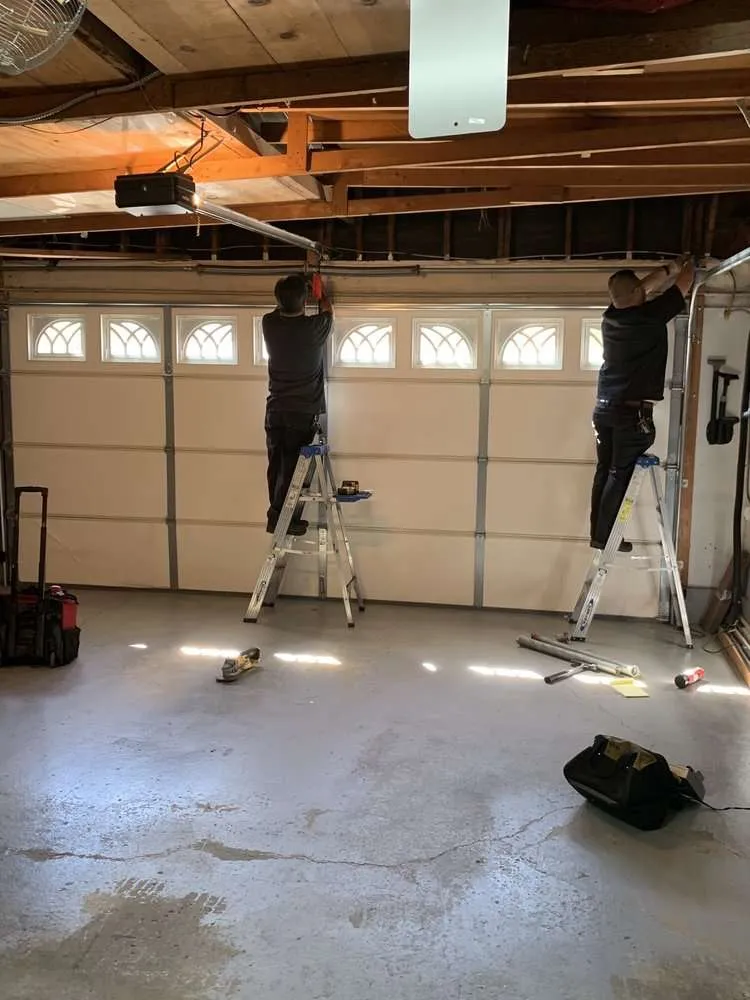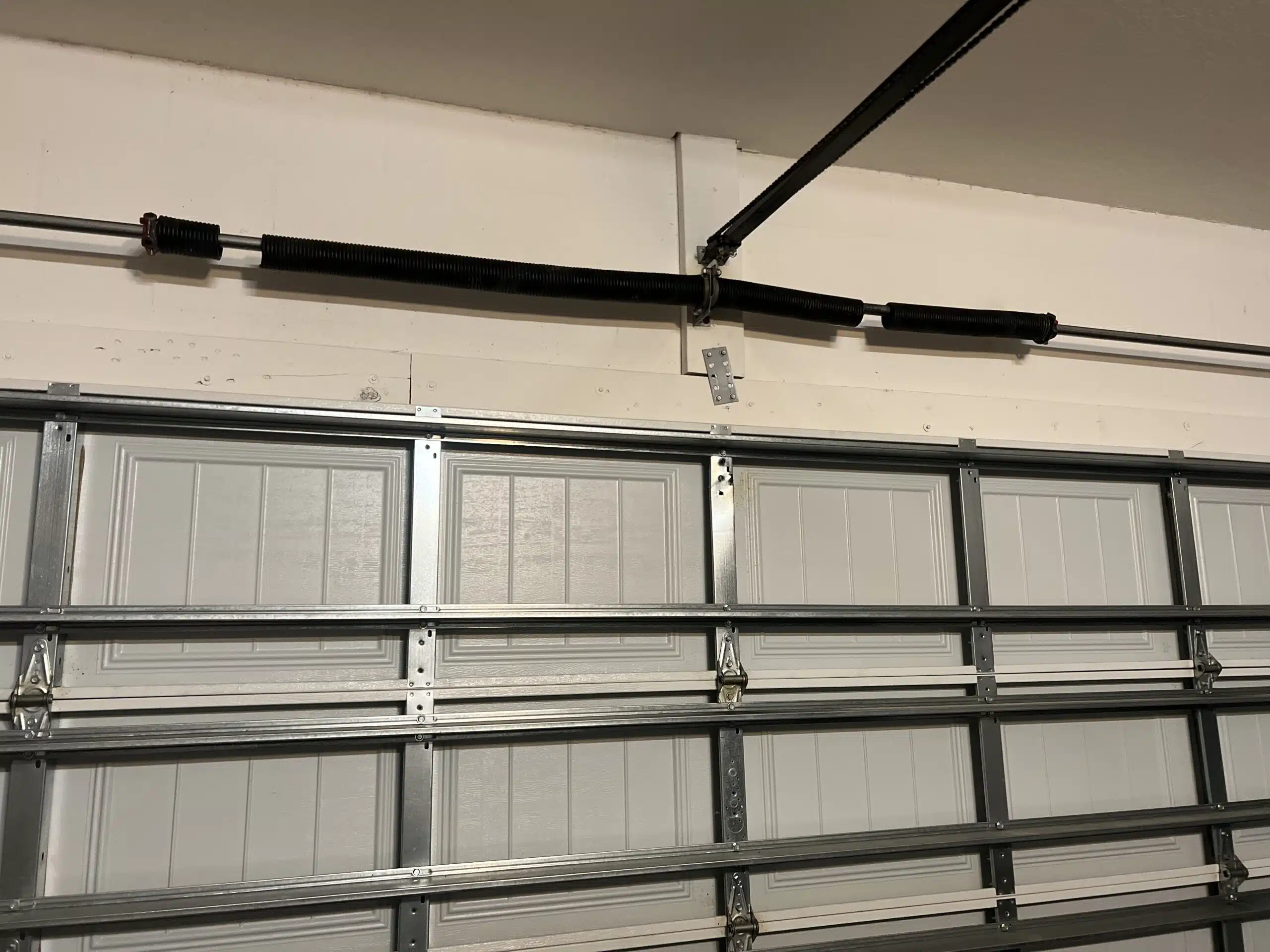Common Garage Door Troubles and How to Fix Them
Garage doors are vital for both safety and ease, yet they often offer a range of usual concerns that can irritate house owners. Issues such as too much noise throughout procedure, doors that fall short to open up or shut, misaligned tracks, and malfunctioning remotes can arise without warning. While some concerns may show up simple to settle, others might require an extra nuanced understanding of garage door auto mechanics. Dealing with these problems effectively not just enhances performance but also prolongs the life of the door. One could wonder what steps are essential to take on these obstacles efficiently.
Noisy Garage Door Operation
A noisy garage door operation can be a considerable resource of inconvenience for property owners, often indicating underlying mechanical issues. Such disruptions might originate from different reasons, including damaged rollers, loosened hardware, or inadequate lubrication. Identifying the source of the noise is important for reliable resolution.
Over time, these elements can deteriorate, leading to grinding or squeaking sounds as the door steps. In addition, loosened screws or screws in the door mechanism can produce rattling noises during operation.
One more contributing aspect is poor lubrication of the door's moving components. Applying a top quality lube to the tracks, springs, and rollers can significantly diminish rubbing and sound. Home owners ought to execute this maintenance occasionally to maintain optimum performance.
Lastly, the garage door opener might also create noise because of its age or mechanical concerns. If the noise lingers regardless of attending to various other aspects, getting in touch with a professional for a thorough evaluation and possible fixing might be necessary.
Door Won't Open or Close
Experiencing a garage door that will not open or shut can be incredibly frustrating and usually indicates a breakdown within the system. Several variables can contribute to this concern, and determining the origin is necessary for effective resolution.

Following, evaluate the safety sensing units situated at the base of the door. These sensing units can come to be misaligned or obstructed by particles, preventing the door from running correctly. Tidy the sensors with a soft towel and ensure they are lined up.
Furthermore, the garage door's interior parts need to be assessed. Concerns such as a damaged spring, damaged rollers, or a damaged opener can restrain activity. If any type of elements seem harmed, it may be advisable to get in touch with a specialist for repair work.
Misaligned Tracks
(Effortless Experience)Misaligned tracks can badly disrupt the smooth procedure of a garage door, resulting in operational failings such as look at here uneven motion or full immobilization. This problem normally emerges because of a variety of variables, including damage, accidental influences, or improper installment. When the tracks are misaligned, the rollers can not relocate openly, which not only stresses the motor however additionally poses security risks.
If you discover any type of discrepancies, it is important to attend to the problem without delay. Carefully touch the track back right into its appropriate position making use of a rubber mallet or a similar tool, guaranteeing it is straight and level.
When the placement is corrected, retighten the screws to secure the track. For a much more long-term solution, consider enhancing the tracks with extra brackets. Normal upkeep, including cleansing the tracks and making sure rollers are in great problem, can avoid future imbalances. By resolving misaligned tracks promptly, you can bring back the capability of your garage door and improve its longevity.
Broken Springs
Amongst the numerous elements of a garage door system, damaged springtimes are just one of one of the most common issues that can significantly restrain its performance. Garage door springtimes are important for balancing the weight of the door, allowing for smooth opening and closing. When a spring breaks, it can lead to a door that is difficult to run or, sometimes, entirely unusable.
There are 2 primary sorts of springs: torsion springs, which are placed above the door, and expansion springtimes, located on either side. Indications of a damaged springtime consist of a door that won't open up, a visible space in the spring, or a loud sound during operation. Trying to operate a garage door with a damaged spring can trigger more damage to the door or the opener.
Repairing damaged springs is not a DIY task; it needs specialized tools and competence because of the high stress included. It is recommended to speak with a professional service technician that can securely replace the springs and ensure the door is effectively balanced. Regular maintenance and examinations can aid avoid springtime failings and extend the lifespan of the garage door system.
Push-button Control Issues

If the remote still falls short to operate, evaluate the garage door opener to guarantee that its sensing units are tidy and unhampered. Dirt, particles, or misalignment might hinder the signal transmission between the remote and the opener.
Disturbance from various other digital gadgets can additionally hamper remote capability. Guarantee that neighboring gadgets, such as wireless routers or cordless phones, are not causing disruptions. garage door service. If disturbance is presumed, try moving these devices further far from the garage door opener
In many cases, the remote may need to be reprogrammed. Get in touch with the supplier's guidelines to reset the remote and synchronize it with the garage door opener. If all else fails and the remote remains to malfunction, think about getting in touch with a specialist specialist for a complete evaluation and possible replacement of the remote or opener.
Conclusion
(Local Support)In recap, common garage door issues can considerably influence functionality and safety. Attending to loud operation entails lubrication and tightening up equipment, while concerns with opening or closing require evaluation of source of power and sensing units. Misaligned tracks can be treated with adjustment, although busted springs demand expert intervention. Remote malfunctions usually occur from weak batteries or disturbance, which can be settled through replacement or reprogramming. Proactive upkeep and prompt repair work can guarantee optimal performance and durability of garage doors.